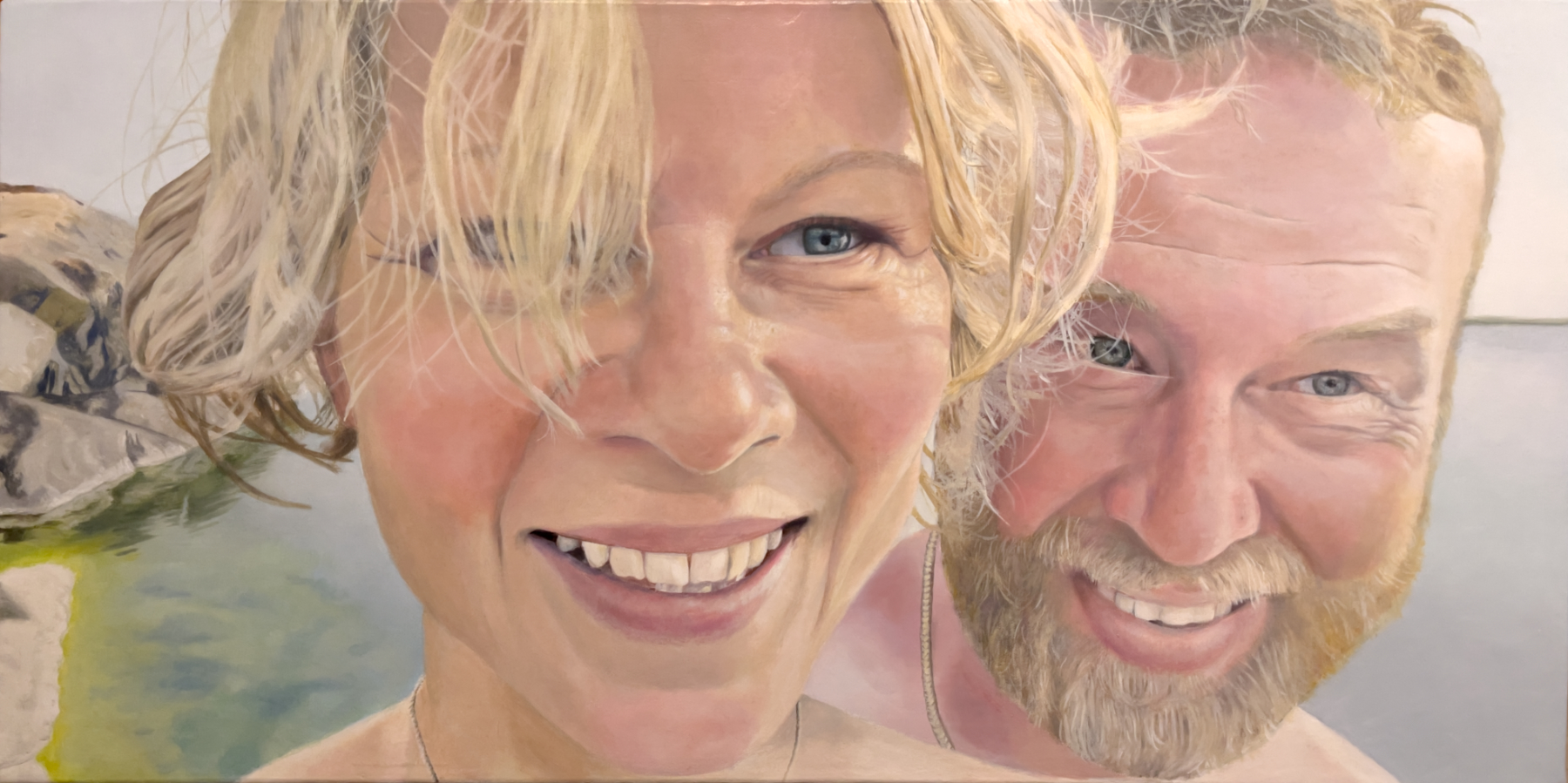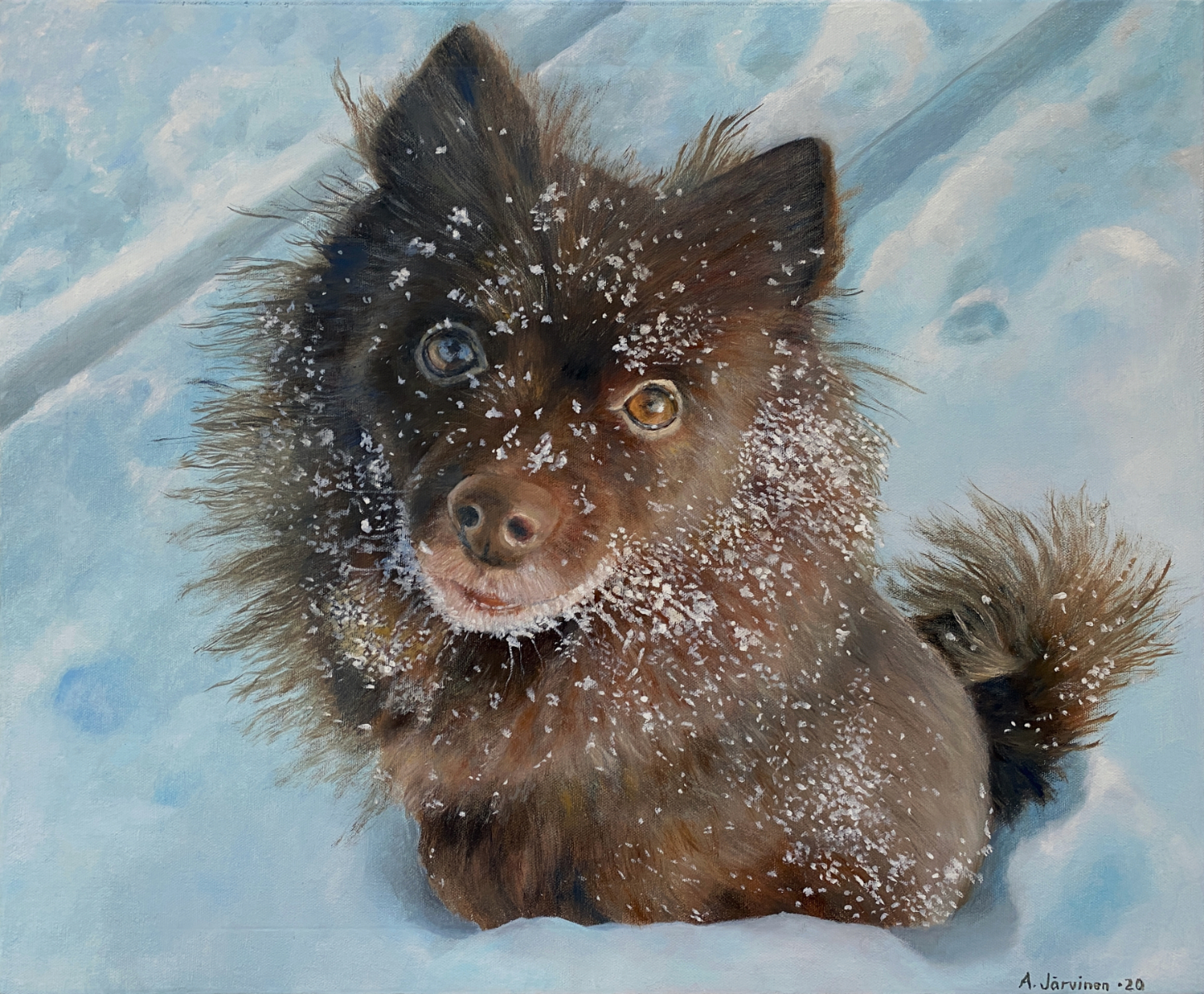Considering commission? ”ABC” on important questions
The physical form of the painting
Among the commissioner's first things to consider is the size of the painting for the space in question. It's kind of the first decision. You should also consider whether it will be in landscape or portrait orientation. What size painting fits the space then? If there's a source photo this usually dictates the orientation, unless cropped.
Realism vs. abstraction vs. something in between
Next you might want to consider the style you are after: do you want it to be as realistic as possible or more of an impressionistic kind, "moody", or completely abstract? The more detailed the painting should be the higher the price will be. It can easily take dozens of hours when a painting is really finessed, particularly in case of a large painting.
Framed or not?
One may also consider whether to have the painting in a frame or whether to hang it as the prefabricated frame itself. The latter is very fashionable nowadays, especially when the sides of the frame are also painted, in a way continuing the painting itself. As of this moment, I'm unable to frame fabric based paintings myself but when done by a professional store you can get a nice enough frame, work included, from 50 euros and up. When you order a prefab canvas painting you can also decide on the depth of the frame, from 1 cm upto 4 cm, with no considerable price difference.
I often paint on fiber boards (MDF) which have a totally smooth surface and there's no pattern visible that is characteristic of fabric canvases. When properly primed these fiber board paintings will last equally long, for decades. Usually I buy these boards with simple frames that are ready to be hung. Paintings on fiber boards aren't actually more expencive.
Protecting the painting
Oil paintings in particular should be varnished because it deepens and brightens the colors. When you start to apply the varnish you can immediately notice the difference. The main reason to do so, however, is to protect the painting in the long run. As an artist, I really wish to protect my work and I hope every buyer appreaciates that. That being said, sometimes I may agree to sell (and ship) a painting before it can be varnished (see below). In that case I expect the buyer to take care of the varnishing in due time. Since it requires some expertice I suggest to contact a professional and let them do the work. It isn't a costly thing to do. Often it is possible to purchase a fitting frame from the same store, so it's actually quite convenient.
The downside of varnish is that it adds somewhat of a gloss that may distract when viewed in certain light or at certain angle. But also that can be mitigated by choosing a matte varnish. There's also a satin varnish that is a mixture of glossy and matte. I've mostly used a glossy version and no one has complained. Even an unvarnished painting will react to light hitting it sideways, creating reflections—that has to do with the nature of the paint. It cannot be totally ruled out. This goes to show how important is the decision where to place the painting.
It is recommended to apply the varnish only after 6 months has elapsed from the time the painting was finished. The oil paint should be completely dry. But this has foremost to do with paintings that have thick layers of paint. I've applied varnish as early as 2–3 months after finishing them since I barely ever paint in thick layers. It is clear from many documented comparisons that the three-month difference has no real relevance.
Varnish dries in a matter of days but smells quite nasty the first couple of days and can be tacky for at least a week. It is properly dry only within a month. It is no problem as long as you remember to not touch it during that period. The painting can by all means be hung on the wall within one week of varnishing. I have paintings on sale that I've already varnished a long enough time ago. But I also have paintings published before varnishing—they can be purchased, shipped over and taken to a professional for varnishing there. This process could well incorporate framing as well. The cost of varnishing will also be accounted for in the price.
How much will a commission cost?
There are mainly two factors affecting the price of a painting: its size and the time required to produce it. In the beginning, we can agree on a quite accurate price range according to these factors, and we can also agree on a maximum price, if needed. The painting can, of course, end up cheaper in the end. Below you find a few rough guidelines according to some of the most common size options. Material and frame may also contribute a small addition on the price.
Size: 38 x 46 cm, price 300–400 €. (Equals to ca. 15" x 18")
Size: 46 x 55 cm, price 400–500 €. (Equals to ca. 18" x 21,5")
Size: 50 x 70 cm, price 500–700 €. (Equals to ca. 19,7" x 27,5")
Size: 70 x 100 cm, price 800–1000 €. (Equals to ca. 27,5" x 39,4")
I wish to be as transparent about my pricing as possible. A rough estimate for my hourly tax is 20 € which is a very moderate compensation. This coincides well with the above rough table on prices per area. I know that 800 € may initially sound like a lot but in the end, it is about 40 hours of work. That is a regular week of work and is easily required for a detailed painting. Sometimes a work can have additional value ("artistic value") that raises the price. This applies more to commissions with considerable artistic freedom, not so much to very realistic versions of commissioners' photographs.
Commissions are by default unique items (read more about that), unless otherwise agreed.
For every item I sell a formal contract, including proof of authenticity, is made. It can be traditionally signed through a letter or (as is nowadays usual) digitally signed through both parties' verified emails.
Please note that these prices are without packaging and shipping fees, inside of Finland. All the details of these additional costs and arrangements will be discussed and agreed upon before final decision of purchase. They will also be included in the written contract. If the buyer wishes to insure the work for the shipping and handling the arrangements and costs will be considered their own responsibility. I use only reputable delivery companies and will pack the painting with utmost care, according to the same guidelines that galleries demand of their shipped items.
The payment in practice
As a default the commissioner pays an advance of at least 50 € at the beginning and sometimes half of the agreed price in a stage where there's a version of the painting from which they can clearly evaluate the final outcome. If the finished work falls clearly short of the expectations it is possible to cancel and I will return the advance. In that case the commissioner will have to accept that I'm free to actively sell the painting to other customers—also in the case, when a photo or a live model of the original commissioner has served as basis for the work.
The final payment will take place either as one-time payment or in agreed installments. The one time payment (or installment) should be placed simultaneously with the receiving of the work. PayPal is my preferred method in international purchases. In case of more costly paintings I will agree to flexible installments and a longer installment period, if needed.

Above is an example of a commissioned double portrait which is quite realistic and detailed. The commissioner has the power and right to steer the process all the way through process images until the end-result is satisfactory.
Below you can see an example of a very detailed animal (pet) commission.

Here's a testimony of one commissioner: "This Mothers' Day I decided to surprise my mother a bit bigger and ordered her this work by artist Arto Järvinen as a gift. I chose Arto to carry out this work because he portrays women in a fresh way and as active persons, instead of rigid models and pretentious expressions. The idea was to choose a mundane, even a bit 'tired-in-the-eye' photo of my mother, instead of some over-the-top posing—to portray the moment's beauty and reality. The goal was to combine traditional oilpainting and fresh feeling of reality through this idea. In my opinion, Arto succeeded excellently based on a smudgy old image. Also, cooperation was fluent and considerate to my little additional wishes. I can warmly recommend Arto!"